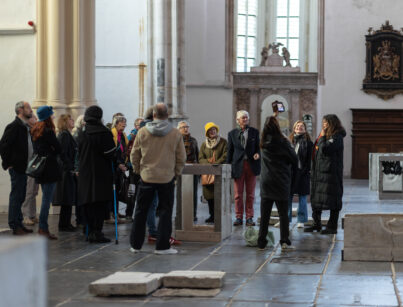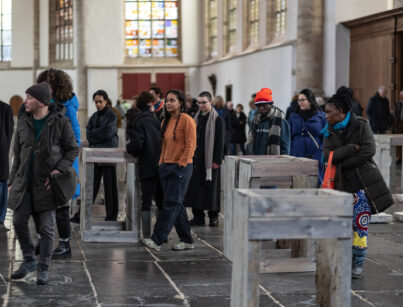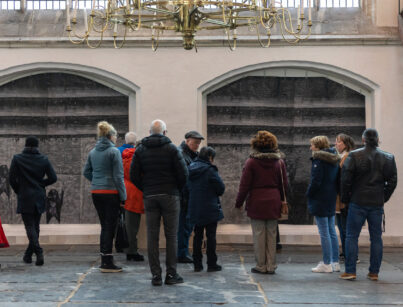

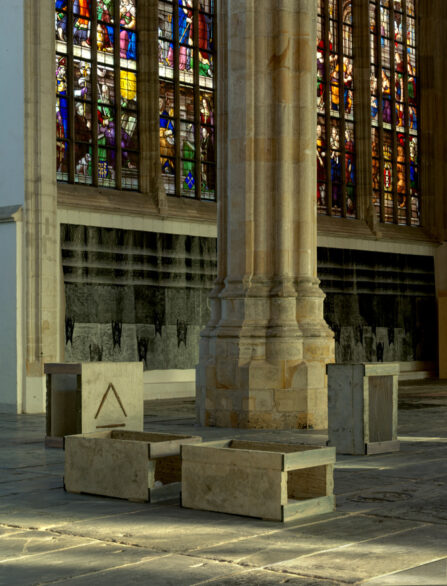
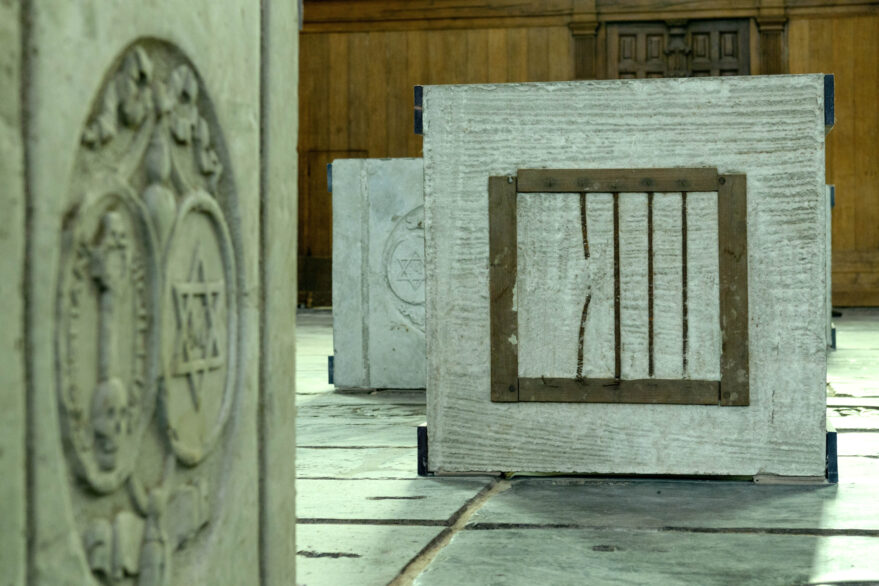
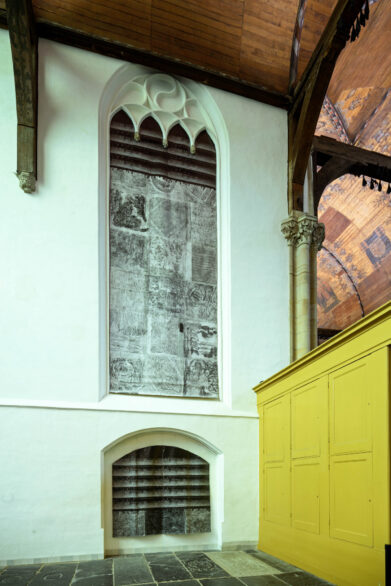



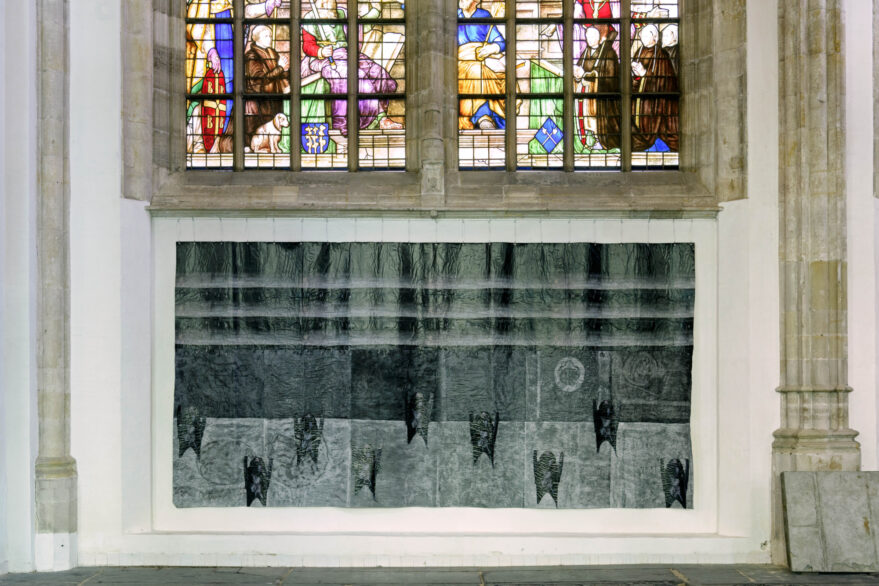

"For me it was very interesting to be able to look at the memory of the space, in relation to the echoes of history, and connection to other spaces." Ibrahim Mahama.
Hover for exhibition details
About the installation
Commissioned by the Oude Kerk, Mahama has been working on a new large-scale site-specific installation for the past two years. Garden of Scars connects the history of the Oude Kerk with an international (historical) context. Scattered through the building are hundreds of sculptures. The sculptures are composed of casts he made from the tombstones in the Oude Kerk and the floors of Fort Elmina (1482) on the coast of Ghana, among others. The fractures, scratches and cracks in the sculptures depict a history of failure, repair, repair.
Historical background
The 3000m2 floor area of the Oude Kerk is formed by tombstones. There are many life stories and memories associated with them that people identify with to this day. Mahama sees the gravestones in the Oude Kerk as a form of collective memory, and questions the social and political aspects of its formation.He links the family histories of the merchants, captains, mayors buried in the Old Church with the traces of the history of the ancient (Dutch) forts along the coast of Ghana where people suffered the (consequences of) colonial trade in Africa. Castles and forts were built from the 15th century on the West African coast by traders from Europe, including the Dutch. Fort Elmina, for instance, initially served the gold trade and later played an important role in the development of the Trans-Atlantic slave trade. Mahama aims to make this shared history visible. Global networks linked to both places and continuing into the present day are made palpable.
Large-scale installations
Mahama’s large-scale installations touch on important issues of our time such as the social and cultural consequences of global trade and migration. His work often uses existing materials, allowing him to make visible shared histories of places that are historically distant from each other. He calls himself a time traveller, showing different places and perspectives simultaneously. Mahama became known for his installations with burlap sacks, which for him symbolise the bad side of globalisation: they are made in Asia, used to export cocoa from Ghana, return to Ghana as a waste product.
About Ibrahim Mahama
Ibrahim Mahama (b. 1987) has grown into an internationally respected artist in recent years. He lives and works between his native Tamale and the Ghanaian capital Accra. He studied painting and sculpture at the Kwame Nkrumah University of Science and Technology, Kumasi, Ghana. During his university years, he embarked on a series of interventions and activities reflecting on themes of globalisation, labour and the circulation of goods, with works also created thanks to a series of collaborations with Ghanaian citizens. In 2019, he established the Savannah Centre of Contemporary Art in Tamale, which includes workshops for schoolchildren and exhibitions of Ghanaian artists. In 2020, he opened the sprawling Red Clay Studio complex, with exhibition spaces, research facilities and artist residencies. In 2020, he was awarded the Prince Claus Prize for his commitment to improving social conditions and developing culture in his home country Ghana.
